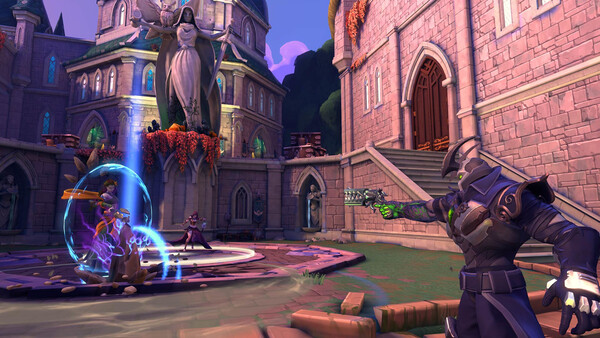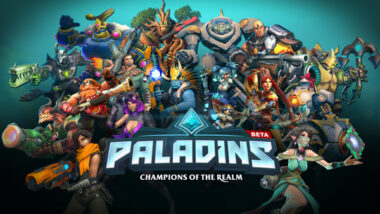Paladins, a fast-paced team shooter, excels with its vibrant characters, strategic gameplay, and competitive modes. However, one of the most frequently discussed and debated issues within the player community is the hitbox discrepancies among champions. A hitbox defines the area in which a champion can be hit by attacks, and its size and shape significantly influence how champions perform in combat. The improper alignment or design of hitboxes can create unfair advantages or disadvantages for specific champions, leading to frustration and imbalance. In this article, we’ll deeply explore the hitbox problem in Paladins, how it affects gameplay, and what potential solutions could look like.
The Basics of Hitboxes in Paladins
Hitboxes are an invisible outline that surrounds a character, determining where damage is registered. In Paladins, each champion’s hitbox should ideally match their physical model, but this isn’t always the case.
Why Hitbox Accuracy Matters
Accurate hitboxes ensure that combat feels fair and skill-based. When hitboxes align correctly with the champion models, it allows players to target opponents accurately, rewarding precision and punishing mistakes.
Hitbox Discrepancies in Paladins
Unfortunately, several champions in Paladins suffer from hitbox discrepancies where the hitbox doesn’t accurately reflect the champion’s visual model. This can lead to certain champions being harder to hit, while others are easier, regardless of their size or intended design. These imbalances disrupt the flow of combat, particularly in fast-paced engagements.
Champions Most Affected by Hitbox Discrepancies
Some champions in Paladins are disproportionately affected by hitbox issues. Champions with smaller or more streamlined models may have a larger-than-necessary hitbox, while bulkier champions may have hitboxes that don’t match their physicality.
The Case of Androxus and Maeve
Two frequently discussed champions in this context are Androxus and Maeve. These flankers are known for their agility, but their hitboxes often feel oversized in comparison to their models. Players complain that landing shots on these champions is easier than it should be, making them more vulnerable than intended in high-stakes matches.
The Issue with Smaller Champions
Champions like Skye also have hitbox issues where their size does not reflect their actual hitbox area. This means that despite being visually smaller and expected to have more survivability through stealth, they still take damage from shots that appear to miss them visually.
Bulkier Champions Like Terminus
On the other end of the spectrum, Terminus and other large champions often have hitboxes that seem to extend far beyond their physical size. This results in these champions taking damage even when it appears they shouldn’t have been hit, creating frustrating gameplay experiences.
Hitbox Issues and Champion Roles
The hitbox problem disproportionately affects certain roles within Paladins, particularly the flanker and tank roles, due to the nature of their gameplay.
Flankers: Fragility in Mobility
Flankers are designed to be mobile, relying on their agility to survive while dealing damage. However, oversized hitboxes make it difficult for flankers to escape damage, even when they use abilities like dashes or jumps. For instance, Evie and Maeve are highly mobile, but their hitboxes are so large that opponents can easily hit them, reducing their effectiveness in a role that requires them to avoid damage.
Tanks: Larger Targets but Unfair Vulnerability
Tanks are expected to absorb damage, but hitbox discrepancies make it even harder for them to fulfill their roles. Inara, for instance, already has a large frame, and her oversized hitbox makes her a prime target for every enemy player. This affects her survivability in high-level play, especially when trying to control objectives.
Hitbox Impact on Competitive Play
Hitbox issues play a significant role in competitive Paladins, where precision and timing are critical. The impact of hitbox discrepancies in professional matches has led to ongoing debates about fairness and competitive integrity.
Precision in High-Level Play
At higher levels of play, even slight hitbox issues can have a profound impact. Pros rely on precise aim, and when a champion’s hitbox is either too large or too small, it creates unpredictability in engagements. Players are often forced to adapt to these inconsistencies, which can feel unfair when the skill level is so high.
Hitbox Abuses
Some competitive players may even attempt to exploit hitbox issues, choosing champions with known hitbox discrepancies to gain an edge. For instance, players might pick small champions like Moji, who have less noticeable hitboxes, making them harder to hit and increasing their chances of survival.
Balancing Patches and Competitive Feedback
While Hi-Rez releases balance patches to fix general gameplay issues, hitboxes remain a recurring topic in competitive feedback. The competitive community has frequently requested more attention to hitbox accuracy, as it affects overall match fairness and champion balance.
The Role of Hitbox Issues in Champion Balancing
Champion balancing in Paladins is an ongoing process. However, without addressing hitbox issues, even well-balanced champions can feel unfair to play against or with.
Misleading Champion Performance Metrics
Hitbox discrepancies can skew performance data, leading to champions appearing stronger or weaker than they actually are. A champion like Cassie, who might seem balanced based on her stats, could underperform because her hitbox is misaligned, making her a bigger target than intended.
Champions Nerfed or Buffed Due to Hitbox Issues
Some champions have been buffed or nerfed based on their perceived power, but these changes don’t always account for hitbox issues. For example, when Lex received a damage buff, his oversized hitbox made him even more vulnerable, leading to a sense of imbalance despite the buff.
The Psychological Impact of Hitbox Discrepancies
Hitbox issues don’t just affect mechanical gameplay—they also influence the mental state of players. Constantly being hit despite seemingly dodging attacks can lead to frustration, especially for newer or less experienced players.
The Frustration of “Unfair” Hits
Players often feel cheated when they are hit by attacks that should have missed based on visual cues. This frustration can lead to rage quits, toxic behavior, or simply player churn as individuals grow tired of unfair engagements.
Losing Faith in Competitive Integrity
In competitive environments, hitbox discrepancies erode trust in the game’s integrity. Players who feel the system is unfair are less likely to continue investing time in competitive modes or ranked play.
The Technical Challenges of Fixing Hitbox Issues
While the community frequently calls for hitbox fixes, these issues are not always easy to address. Hitboxes are tied to the game’s core mechanics and engine, making adjustments difficult without introducing new problems.
Game Engine Limitations
The current game engine used by Hi-Rez for Paladins has limitations when it comes to hitbox precision. Updating hitboxes to perfectly match champion models requires extensive testing and coding adjustments, which can lead to other unforeseen issues like collision detection problems.
Risk of Unintended Consequences
Even slight changes to hitboxes can have unintended consequences. For instance, reducing a hitbox for a tank like Barik might make him too difficult to hit, which would create new balance issues in favor of tanks.
Potential Solutions for Hitbox Discrepancies
To address the hitbox issue, Hi-Rez Studios could take several approaches that would improve the balance and fairness of the game without significantly altering the core mechanics.
Regular Hitbox Audits
One potential solution is conducting regular audits of hitboxes, comparing them to champion models to ensure that they align properly. These audits could be tied to balance patches, ensuring that hitboxes stay consistent across updates.
Community-Driven Testing
Hi-Rez could also involve the community in testing new hitbox changes. By introducing public test servers or specific feedback sessions, players could help identify hitbox discrepancies before they go live, reducing the risk of negative impacts on balance.
The Community’s Role in Highlighting Hitbox Issues
The Paladins community has been vocal about hitbox discrepancies, with many players providing feedback on forums and social media platforms. Their input has been invaluable in driving awareness of the problem.
Champion-Specific Hitbox Feedback
Players often provide detailed feedback on specific champions like Evie, pointing out areas where hitboxes don’t align with visual models. This kind of granular feedback is crucial in helping the developers understand where the issues lie.
Continuous Dialogue Between Players and Developers
For hitbox issues to be resolved, there needs to be a continuous dialogue between the community and the developers. Open communication channels, along with transparent roadmaps for hitbox improvements, can help maintain player confidence in the game.
Conclusion
The hitbox discrepancies in Paladins represent a critical issue that affects gameplay, champion balance, and competitive integrity. Whether you’re a casual player or a competitive pro, hitbox alignment plays a key role in shaping your experience with the game. While Hi-Rez Studios has made strides in addressing various balance concerns, the hitbox problem remains an area that requires more focused attention. By taking steps to align hitboxes more accurately with champion models, Paladins can offer a fairer, more enjoyable experience for all players.


